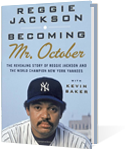By Kevin Baker
Calamity hovered over America in 1944. It had nothing to do with World War II; instead, the nation faced a more insidious challenge: What to do with the 16,354,000 men and women serving in the armed forces?
The Department of Labor forecast up to 15 million unemployed, once the guns went silent. A similar coincidence of lower production and returning veterans had produced a sharp depression from 1921-23.
That lesson was not lost on President Franklin Roosevelt. Taking to the radio in 1943, he proposed a series of benefits for the men and women in uniform. It was a suggestion that the vets’ self-appointed lobby, the American Legion, grabbed onto with both hands, along with the Hearst newspapers. Legion publicist Jack Cejnar came up with the term, “The GI Bill of Rights”—officially passed as “The Serviceman’s Readjustment Act of 1944.”
One of the most pragmatic, successful social programs in American history was born. Returning veterans could borrow up to $2,000 to buy a house, start a business or a farm. They would receive $20 a week, for 52 weeks, until they found a job. There were lifelong medical benefits, improved services for disabled veterans disabled in action. And yes, there was a de facto bonus of $1,300 in discharge benefits.
The effect of all this on both the veterans and the economy was immediate. By 1955, 4.3 million home loans had been granted, with a total face value of $33 billion. Veterans were responsible for 20 percent of all new homes built since the war. The results rippled through the rest of the economy; there would be no new depression, just unparalleled prosperity for a generation.
Few veterans, though, actually used their $20-a-week unemployment benefits. Instead, they preferred some of the most beloved benefits of the GI Bill: those for education and vocational training.
Altogether, 7.8 million vets received education and training benefits. Some 2.3 million went to college. They got $500 a year for books and tuition, plus $50 a month in living expenses. In return, they transformed American education. The GI Bill students soon became legendary as hard-working, serious young men, rushing to complete their education as soon as possible, and move into solid, high-salaried professions. They crowded into unprepared universities, often with a pregnant wife, living in Quonset huts, converted munitions plants, makeshift trailers—even, in one instance at Southern Cal, a used car. They often had part-time jobs, or working spouses, or both—even after Congress upped their living expenses to $75 a month, $120 for a married couple with a child.
It all seemed like bliss to men used to trenches and K-rations. By 1946, over half of the college enrollments in the country were vets, and they often constituted close, supportive communities within the wider campuses.
Rep. W. Howes Meade of Kentucky groused that most of the members of his House Committee on Veterans Affairs were vets, but had received their college education “without any assistance from the government.” Robert Maynard Hutchins, president of Chicago University, piously warned that most Americans were not yet ready for “the education of a free man,” and that higher education “used as a substitute for a dole or for a national program of public works” would only create “educational hobos.”
Hutchins’ fears were unfounded. Educational Testing Service’s study of 10,000 vets found that a combined 20 percent of them would “probably” or “definitely” not have attended college without the GI Bill. That figure rose to 35 percent for vets above 22 years of age. And yet, “there is a tendency for veterans to achieve higher grades in relation to ability than do nonveteran students.” A slew of GI Bill grads would go on to occupy the highest ranks of business, government, the professions, even win Nobel Prizes.
The number of degrees awarded by U.S. colleges and universities more than doubled between 1940-50, and the percentage of Americans with bachelor degrees or more rose from 4.6 percent in 1945, to 25 percent a half-century later. By 1956, when it expired, the education-and-training portion of the GI Bill had disbursed $14.5 billion to veterans—but the Veterans’ Administration estimated the increase in federal income taxes alone would “be several times…[that] cost.”
As Joseph C. Goulden writes in The Best Years 1945-1950, the GI Bill “marked the popularization of higher education in America. After the 1940’s, a college degree came to be considered an essential passport for entrance into much of the business and professional world.”
American Greats Edited by Robert A. Wilson & Stanley Marcus
Public Affairs Press, a member of the Perseus Group









